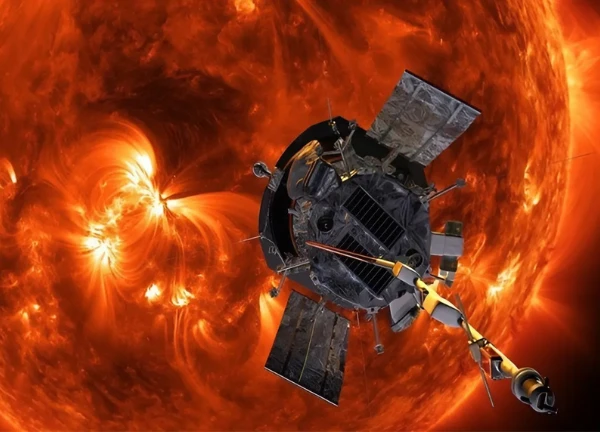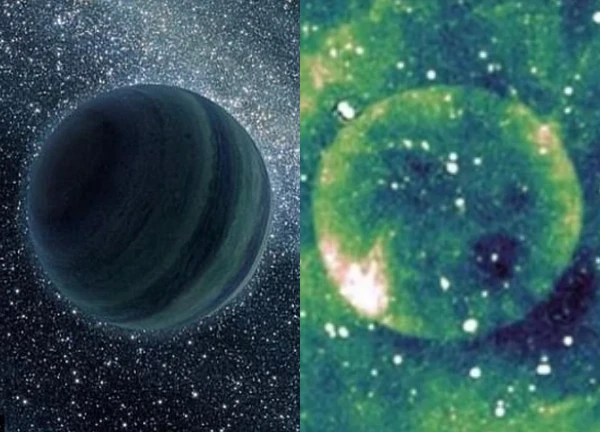NASA astronaut's secret revealed after 340 days in space, surprising the world

2 | 0 Discuss | Share
NASA found that the Earth is darkening in both hemispheres, but the Northern Hemisphere is darkening faster than the Southern Hemisphere, revealing unusual changes in the planet's energy and climate.
A new study, based on 24 years of satellite data from NASA, has shown that the Earth is gradually getting darker, with a marked difference between the Northern and Southern Hemispheres. The team conducted the study based on data collected from the Radiant Energy System of Clouds and Earth (CERES) project, with the first phase being implemented in 1997.
NASA explains that Earth's climate is directly affected by the amount of sunlight the planet absorbs and the amount of infrared energy it emits into space. These two quantities along with the difference between them make up the Earth's radiation budget (ERB). According to NASA, CERES provides observations of ERB and clouds from satellites, combining measurement data from instruments on various satellites to create a comprehensive set of information for climate, weather and scientific applications.
ERBs play an important role in regulating atmospheric and ocean circulation, so pinpointing the areas where the Earth absorbs and loses energy is essential, especially in the context of increasingly severe climate change. When analyzing the data in depth, the team found that the Earth's albedo — the amount of solar radiation that the Earth reflects back into space — is changing markedly.
"The circulation of the atmospheric and oceanic systems is closely linked to the distribution of radiant energy in the climate system," the team said. Based on satellite observations, they found that although both hemispheres are darkening, the Northern Hemisphere is darkening faster than the Southern Hemisphere. The reason is that the Northern Hemisphere absorbs more solar radiation but at the same time emits more long-wave radiation.
A range of factors such as clouds, snow cover and atmospheric water vapor all contribute to this phenomenon, the team explained. Previous studies have suggested that atmospheric and oceanic circulation can partially compensate for the imbalance between the two hemispheres. However, new research published in the journal PNAS indicates that there are still important differences that atmospheric and oceanic circulation cannot balance.
Specifically, the faster darkening in the Northern Hemisphere is related to changes in radiation-aerosol interactions, surface albedo, and water vapor, which cannot be compensated for by clouds. "This suggests that there is a limit to the role of clouds in maintaining albedo symmetry between the two hemispheres," the team emphasized.
In addition, the study also found that the Northern Hemisphere is warming faster than the Southern Hemisphere, and the tropics are becoming wetter, reflecting changes in large-scale atmospheric circulation on Earth. Experts stress that more research is needed on this phenomenon, as the Northern Hemisphere may continue to warm faster than the Southern Hemisphere, while the role of clouds in redistributing heat across the planet is likely to diminish.
NASA captures the Sun's strange smile, warns of geomagnetic storm heading towards Earth  Hải Đăng11:43:13 30/10/2025Just in time for Halloween, NASA captured an image of the Sun appearing like a giant, smiling pumpkin face. But behind that spooky smile is a coronal hole that is sending high-speed winds toward Earth, which could trigger geomagnetic storms.
Hải Đăng11:43:13 30/10/2025Just in time for Halloween, NASA captured an image of the Sun appearing like a giant, smiling pumpkin face. But behind that spooky smile is a coronal hole that is sending high-speed winds toward Earth, which could trigger geomagnetic storms.

2 | 0 Discuss | Share

2 | 0 Discuss | Share

2 | 0 Discuss | Share

3 | 0 Discuss | Share

1 | 1 Discuss | Share

2 | 0 Discuss | Share

5 | 0 Discuss | Share

3 | 0 Discuss | Share

2 | 0 Discuss | Share

4 | 0 Discuss | Share

2 | 0 Discuss | Share

1 | 0 Discuss | Share




5 | 0 Discuss | Report